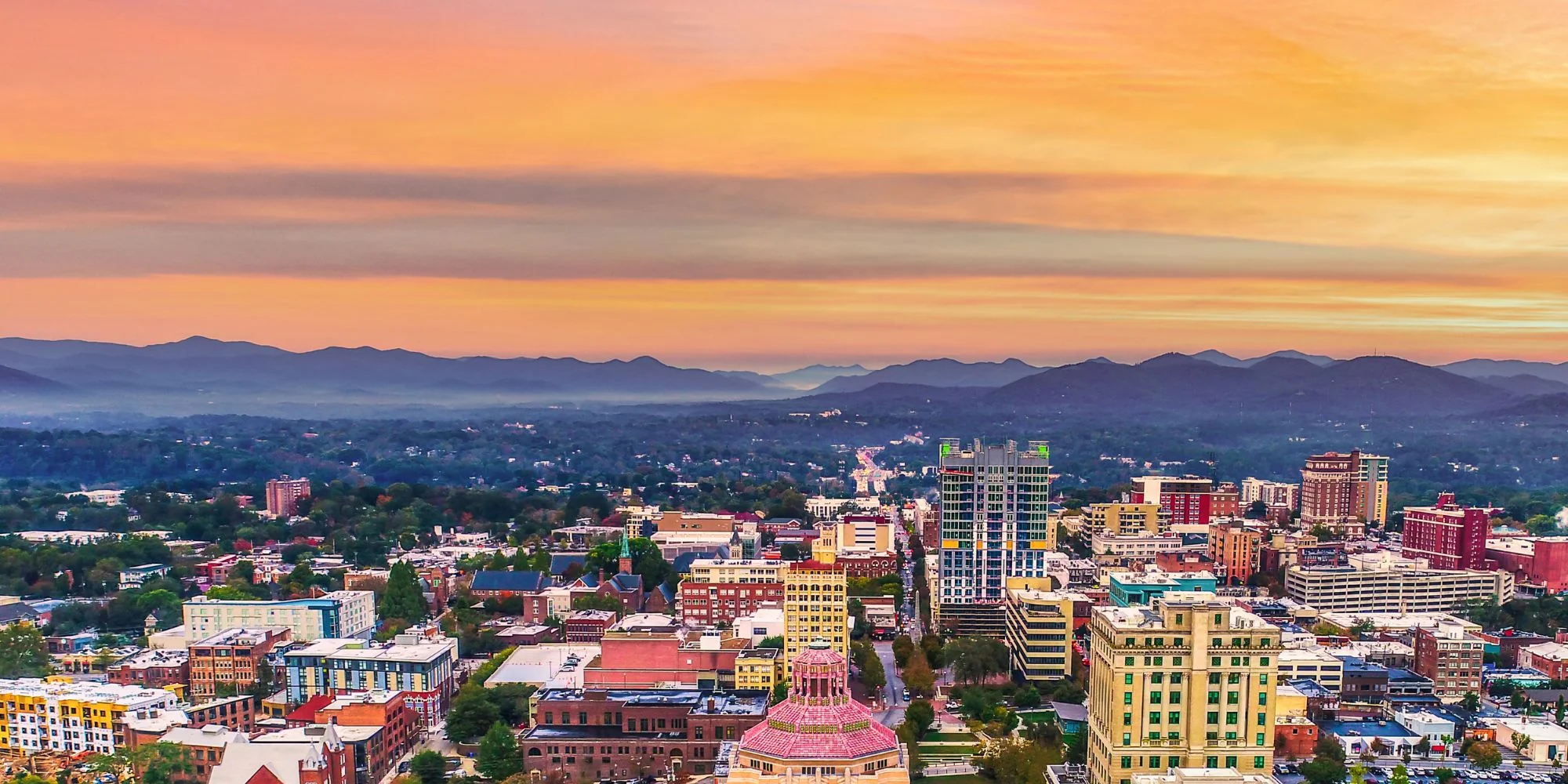Nestled in the Blue Ridge Mountains of western North Carolina, Asheville is a city that blends natural beauty, cultural vibrancy, and a rich historical backdrop. While many people know Asheville for its thriving arts scene, craft breweries, and proximity to the famous Biltmore Estate, fewer realize that its unique location and height above sea level play a significant role in shaping its identity. From the crisp mountain air to the breathtaking views, the story of Asheville’s elevation is one worth telling.
The Story Behind Asheville Elevation
When you first step into Asheville, it’s impossible not to notice the way the land rises and falls. The city sits at approximately 2,134 feet (650 meters) above sea level, making it one of the higher-altitude cities in the eastern United States. This position places it directly in the embrace of the Blue Ridge Mountains, a range celebrated for its rolling peaks, lush forests, and misty horizons.
The elevation here isn’t just a number—it’s a defining feature that influences nearly every aspect of life. The crispness of the air, the slower pace of the seasons, and even the creativity that seems to flow through Asheville’s community all tie back to its mountain home. It’s no wonder that visitors often remark on the city’s distinct atmosphere, one that feels both calming and inspiring at the same time.
How the Mountains Shape Asheville’s Climate
One of the most direct impacts of Asheville’s altitude is on its climate. Sitting higher than many surrounding areas, the city enjoys cooler summers and milder winters than you might expect in North Carolina. In July, average high temperatures hover around the mid-80s Fahrenheit, while January lows dip into the 20s.
This moderation is thanks to the surrounding mountains, which act like natural walls. They trap weather systems, direct wind currents, and create the microclimate that makes Asheville such a comfortable place to live. For residents and visitors alike, this means warm summer evenings on patios, stunning autumn foliage, and crisp winter days perfect for cozy firesides.
For gardeners, farmers, and vintners, the climate shaped by elevation provides fertile ground for creativity. The region’s farms grow everything from heirloom vegetables to grapes used in North Carolina’s burgeoning wine industry. Even the famous hop-forward beers brewed in Asheville owe some of their quality to the climate nurtured by mountain air.
A Natural Playground at Higher Ground
Asheville’s position above sea level doesn’t just shape the weather—it defines the experiences waiting outside your door. The city is a gateway to some of the most spectacular natural wonders in the eastern United States.
Hiking and Scenic Views
From Asheville, trails wind in every direction, leading to waterfalls, panoramic overlooks, and high-altitude meadows. Just a short drive from the city, you’ll find the Blue Ridge Parkway, often called “America’s favorite drive.” This scenic route climbs to elevations well over 6,000 feet, offering views that stretch across endless ridges and valleys.
One of the most famous hikes near Asheville is Mount Mitchell, the highest peak east of the Mississippi at 6,684 feet. Standing atop this mountain, with cool winds rushing past and clouds drifting at eye level, visitors often gain a new appreciation for the landscape that cradles Asheville below.
Outdoor Adventures Year-Round
The city’s location also means that outdoor activities aren’t limited to one season. In spring, wildflowers bloom across mountain slopes. Summer brings rafting on the French Broad River, cycling through hilly terrain, and camping under star-filled skies. In autumn, the mountains blaze with color, drawing leaf-peepers from across the country. And in winter, nearby ski resorts give locals and visitors a chance to enjoy snow-covered slopes.
Asheville’s elevation ensures that each of these experiences feels just a little more refreshing, a little more vivid, and undeniably more memorable.
The Historical Significance of Life in the Mountains
Elevation has always played a role in Asheville’s story. Long before it became a bustling city, the land was home to the Cherokee people, who understood the rhythms and resources of mountain living. When European settlers arrived, the mountains offered both protection and challenge, shaping communities that were self-reliant and deeply tied to the land.
By the late 19th century, Asheville’s clean mountain air became a draw for those seeking health and healing. Doctors often recommended the city to patients suffering from tuberculosis, believing that the elevation and climate offered restorative qualities. This medical reputation brought wealth and investment, helping Asheville grow into the cultural hub it is today.
The mountains also influenced architecture and urban development. Buildings were designed to complement the landscape, with porches and verandas that opened to the views. Roads and railways had to be carefully engineered to navigate the steep terrain, creating a cityscape unlike any other in the state.
Culture and Creativity at Elevation
Asheville’s geography doesn’t just affect its climate and history—it also inspires its people. There’s something about living in a city surrounded by peaks that fuels creativity. Writers, musicians, painters, and artisans have long been drawn to Asheville, finding in its mountain setting both solitude and inspiration.
The city is home to countless art galleries, music venues, and festivals, many of which celebrate the natural world. From bluegrass played on street corners to murals splashed across brick walls, the creativity born at elevation is impossible to ignore. Even the city’s famous craft breweries reflect this spirit, often naming their beers after local peaks, rivers, and trails.
Health and Wellness in the Mountain Air
Living at higher altitudes is often associated with health benefits, and Asheville’s elevation is no exception. While not as extreme as the heights of Colorado or the Alps, the city’s altitude provides cleaner, cooler air compared to lower-lying urban centers. For many, this contributes to a sense of rejuvenation.
Yoga studios, wellness retreats, and spas across Asheville embrace the mountain atmosphere as part of their offerings. Visitors often come to recharge—whether through meditation on a mountaintop, soaking in hot springs nearby, or simply breathing deeply on a morning hike. It’s not surprising that wellness tourism has become one of Asheville’s thriving industries.
Exploring Beyond Asheville
While the city itself sits at just over 2,000 feet, the surrounding region climbs dramatically. Drive just a short distance, and you can find yourself at elevations double or even triple that of downtown Asheville.
- Mount Pisgah: At 5,721 feet, this peak offers one of the most iconic hikes in the region, complete with a panoramic view that captures the spirit of the Blue Ridge.
- Craggy Gardens: Famous for its summer bloom of rhododendrons, this area sits at nearly 6,000 feet, with trails that showcase both flora and far-reaching views.
- Great Smoky Mountains National Park: Just a drive away, the Smokies offer peaks over 6,500 feet, diverse wildlife, and some of the most cherished wilderness in the country.
For travelers, this means Asheville serves as a perfect home base—an elevated city surrounded by even loftier adventures.
Why Elevation Matters to Asheville’s Identity
It’s easy to see Asheville’s height above sea level as just another statistic. But in reality, it’s a thread that ties together the city’s character. Elevation influences the way people live, the food they eat, the art they create, and the way visitors experience the city.
Imagine sipping a cup of locally roasted coffee on a cool morning, mist rising from the mountains. Or standing on a downtown rooftop as the sun sets behind ridges that seem to roll on forever. These experiences would not feel the same without the city’s unique elevation.
Conclusion:
Asheville is more than just a city—it’s a place where elevation shapes every detail, from the weather to the culture. The story of Asheville elevation is one of harmony between land and life, where mountains aren’t simply a backdrop but an active force in creating beauty, creativity, and community.
To stand in Asheville is to stand at a crossroads of nature and culture, of history and modern living, all elevated—literally and figuratively—by the heights of the Blue Ridge. Whether you’re a first-time visitor, a long-time resident, or simply someone dreaming of the mountains, Asheville’s story reminds us that sometimes the best views come not just from looking up, but from living higher.




